Analysis of Shelf Life and Flavor Substances of Duck Clavicle with HS-GC-IMS Technology
-
摘要: 休闲食品鸭锁骨深受消费者喜爱,然而有关其货架期技术参数却比较缺乏。本文在室温贮藏条件下研究了其pH、TVB-N、水分含量和菌落总数的变化规律;在此基础上采用顶空-气相色谱-离子迁移谱(HS-GC-IMS)结合主成分分析(PCA)对鸭锁骨贮藏过程中的挥发性物质进行了研究并建立了货架期前后风味指纹图谱。结果表明:随着贮藏时间的延长鸭锁骨pH呈现下降趋势,菌落总数、TVB-N和水分呈现出上升趋势。第6 d的TVB-N含量为21.1±1.21 mg/100 g,菌落总数第6 d为5.82±0.08 lg CFU/g,都超过最高安全限量值,判定其货架期为不超过6 d。GC-IMS技术鉴定出52种挥发性风味物质,包括12种醛、13种醇、7种酮、8种酯、6种酸、2种吡嗪类物质、2种呋喃类物质、1种胺类物质和1种碳氢化合物。在贮藏初期(0、2 d)关键风味物质有丙醛、2-甲基丁酸、乙酸丙酯、丁酸乙酯、庚醛等。在产品超过货架期(6 d)后,2,3-丁二酮、3-羟基-2-丁酮二聚体、N-亚硝基甲基乙基胺、2,3-戊二酮、丁酸、丙酸等成为主要特征挥发性物质,这些挥发性物质可以作为判定鸭锁骨超过货架期标记物,基于GC-IMS技术建立的鸭锁骨货架期指纹图谱可以为生产公司提供新的技术参数。
-
关键词:
- 鸭锁骨 /
- 货架期 /
- 顶空-气相色谱-离子迁移谱(HS-GC-IMS) /
- 风味物质
Abstract: Duck clavicle is very popular among consumers as snack food, however, the technical parameters about its shelf life are insufficient. In this paper, the changes of pH, TVB-N, water content and total bacterial count were studied under room temperature storage. On this basis, the volatile flavor compounds of duck clavicle were detected using headspacegas chromatography-ion mobility spectroscopy (HS-GC-IMS) combined with principal component analysis (PCA), and the flavor fingerprints around shelf life were established. The results showed that the pH appeared downtrend, and the total number of colonies, TVB-N, water were on the increasing following the growth of storage time. On the 6th day, the content of TVB-N was 21.1±1.21 mg/100 g and the total number of colonies on the 6th day was 5.82±0.08 lg CFU/g. Both of them exceeded the maximum safety limit value, so its shelf life was determined to be no more than 6 days. A total of 52 flavor substances were identified by GC-IMS technology, including 12 aldehydes, 13 alcohols, 7 ketones, 8 esters, 6 acids, 2 pyrazines, 2 furans, 1 amine and 1 hydrocarbon. Propanal, 2-methylbutyric acid, propyl acetate, ethyl butyrate and heptanal were determined as the key flavor compounds of samples at the initial stage of storage (0, 2 d). After the samples exceeded the shelf life (6 d), 2,3-butanedione, 3-hydroxy-2-butanonedimer, 2,3-pentanedione, N-nitromethylethylamine, butyric acid,propionic acid were the main flavor compounds. These volatile substances could be used as characteristic markers substances to determine the shelf-life of duck clavicle product. The shelf-life fingerprint based on GC-IMS technology would provide new technical parameters for production companies. -
酱卤肉制品因其独特的风味、营养价值而深受年轻消费者喜爱,但其货架期短,容易变质。超过货架期的肉制品不仅微生物超标,物理化学性质发生变化,同时其风味感官特性也有所改变。因此,酱卤肉制品的货架期的预测不仅是注重健康的消费者关注的热点问题,同时也是生产公司将其推向市场面临的一个挑战。
目前常用的肉类新鲜度的检测方法有挥发性盐基氮(TVB-N)[1]、菌落总数[2]、近红外光谱法[3]、电子鼻[4]和电化学传感器[5]等。由于这些方法需要复杂的样品前处理过程,使得操作变得较为繁琐。顶空-气相色谱-离子迁移谱(HS-GC-IMS)[6-8]是一种新兴的技术,可用于测定食品中关键香气成分的含量[9-10],分析肉制品风味化合物变化进而判断肉制品的货架期。与传统的方法相比,HS-GC-IMS具有响应速度快,灵敏度高,操作简单等优点[11];已广泛应用于医疗检测领域[12]、环境监测领域[13]、食品领域,如食品新鲜度评价、食品风味鉴别和食品掺假鉴别等方面[14-15]。Cavanna等[16]使用SPME-GC-IMS选择并鉴定了不同批次鸡蛋的挥发性物质,成功地对新鲜鸡蛋样品和非新鲜鸡蛋样品进行了区分。这些结果表明,GC-IMS可用于建立不同货架期的食品风味指纹图谱,PCA是一种多元统计分析方法,可以结合HS-GC-IMS对肉制品中挥发性风味物质进行检测。
本研究以鸭锁骨为实验研究对象,首先通过pH、菌落总数等理化与微生物指标确定其货架期;在此基础上,通过GC-IMS技术鉴定其贮藏过程中挥发性风味成分变化规律,建立货架期指纹图谱,为生产公司提供货架期检测新的技术参数。
1. 材料与方法
1.1 材料与仪器
酱卤鸭锁骨 辽宁闻天香食品有限公司,室温下储存0、2、4、6、8 d,分别取三个平行样进行实验;氯化钠 分析纯,天津市大茂化学试剂厂;氯化钾 分析纯,辽宁泉瑞试剂有限公司;盐酸 分析纯,锦州古城化学试剂有限公司;硼酸 分析纯,天津永晟精细化工有限公司;氧化镁 分析纯,天津市风船化学试剂科技有限公司;2-丁酮、2-戊酮、2-己酮、2-庚酮、2-辛酮、2-壬酮 分析纯,国药公司;PCA培养基 青岛科技工业园海博生物技术有限公司。
FE20 pH计、ME104电子天平 瑞士Mettler Toledo公司;LRH-150L生化培养箱 上海一恒科学仪器有限公司;K9840凯氏定氮 山东海能科学仪器有限公司;Flavour Spec®气相离子迁移谱联用仪 G.A.S.Gesellschaft für analytische Sensorsysteme mbH公司;T25均质机 德国IKA集团;THZ-100B恒温培养摇床、DHG-9240A电热恒温干燥箱 上海一恒科学仪器有限公司;LDZM-69L-II立式高压灭菌锅 上海申安医疗器械厂;SW-CJ-2FD超净工作台 苏净集团苏州安泰空气技术有限公司。
1.2 实验方法
1.2.1 理化性质测定
pH的测定:按照GB 5009.237-2016《食品pH值的测定》的方法进行测定。
挥发性盐基氮(TVB-N)的测定:依据GB 5009.228-2016《食品中挥发性盐基氮的测定》中的半自动凯氏定氮法。
水分含量的测定:按照GB 5009.3-2016《食品中水分的测定》中的直接干燥法并稍作修改,取样质量为1.000 g左右,设置烘箱温度为105 ℃烘至恒重。
菌落总数的测定:依据GB 4789.2-2016《食品微生物学检验:菌落总数测定》并稍作修改,取样10.000 g于灭菌的90 mL生理盐水中,摇床振摇1 h。其余与国家标准一致。
1.2.2 挥发性风味物质的测定
1.2.2.1 样品制备
取储藏0、2、4、6、8 d的鸭锁骨可食用部位于绞肉机中搅碎,称取2.0 g样品于20 mL顶空瓶中,每个样品三个平行。
1.2.2.2 HS-GC-IMS测定条件
2.0 g样品直接加入20 mL顶空瓶中,孵育温度为60 ℃,孵育时间20 min,色谱分离采用FS-SE-54-CB-1毛细管柱(15 m×0.53 mm,1 μm膜厚),保持在60 ℃。氮气作为载气,从2 mL/min开始,持续2 min,然后在8 min增加到20 mL/min,在10 min增加到130 mL/min。
1.3 数据处理
使用仪器配套的分析软件LAV(Laboratory Analytical Viewer,LAV)和GC-IMS Library Search软件内置的2014 NIST数据库对特征风味物质进行定性分析。运用LAV中Reporter和Gallery插件程序构建挥发性有机物的差异图谱和指纹图谱。采用Origin 2019b软件进行主成分分析(principal component analysis,PCA),并生成PCA图。
2. 结果与分析
2.1 理化与微生物指标结果
为了评估鸭锁骨产品货架期,对常温下不同储藏时间的产品进行了理化指标的测定。主要有pH、TVB-N、菌落总数和水分含量,结果见图1。
pH对于微生物的生长有重要影响,所以在肉制品新鲜度的检测中pH是一项重要指标[17]。如图1A所示,随着储藏时间的增加,pH呈现出下降的趋势,这可能是因为在储藏的过程中乳酸菌的生长导致的[18]。第6 d以后,pH出现了上升趋势,推断微生物分解蛋白质产生胺类物质导致pH上升[19]。
TVB-N是判定肉质腐败的另一个重要依据,指肉制品中的蛋白质在内源酶或者微生物的作用下分解成氨、挥发性胺等碱性含氮物质,可用来衡量肉制品中蛋白质的降解程度[20],判断肉制品的新鲜度。根据国标GB 2707-2016《鲜(冻)畜、禽产品》和前人的研究成果[21-23],肉及肉制品中TVB-N的标准:一级鲜肉≤15 mg/100 g;二级鲜肉≤20 mg/100 g。从图1B中可以看出第6 d的含量为21.1±1.21 mg/100 g,已经不再新鲜不可食用。
水分含量与肉质的新鲜度也存在一定的关系,当水分含量高时,容易滋生微生物,造成微生物的繁殖进而影响变质程度[24]。从图1C中也可以看出随着储存天数的增加,水分含量也呈现出上升的趋势。
随着储藏时间的增加,细菌滋生繁殖从而加速了肉的变质,因此菌落总数可以作为评判肉制品微生物污染状态的一个重要依据[25]。根据GB 2726-2016《食品安全国家标准 熟肉制品》中的规定,熟肉制品可接受水平的菌落总数限量值为1×104 CFU/g,而最高安全限量值为1×105 CFU/g[26],即lg CFU/g 为5。从图1D中可以看出第6 d为5.82±0.08 lg CFU/g,已经超过国标规定。综合四个理化指标判定鸭锁骨的货架期为不超过6 d。
2.2 风味物质的测定
2.2.1 不同储藏时间下鸭锁骨特征挥发性成分的差异分析
运用GC-IMS技术对不同储藏时间鸭锁骨样本进行挥发性成分差异,图2为二维差异图。
![]() 图 2 不同储藏时间鸭锁骨中风味物质GC-IMS 2D差异图注:0、2、4、6、8表示不同储存天数的样品编号;图3同。Figure 2. GC-IMS 2D difference of flavor substances in clavicle of ducks with different storage time
图 2 不同储藏时间鸭锁骨中风味物质GC-IMS 2D差异图注:0、2、4、6、8表示不同储存天数的样品编号;图3同。Figure 2. GC-IMS 2D difference of flavor substances in clavicle of ducks with different storage time采用HS-GC-IMS方法对不同贮藏时间鸭锁骨样品挥发性有机物进行分析,得到货架期前后样品中风味物质及其变化规律。为了更加明显比较不同样品的差异,选取其中第0 d样品的谱图作为参比,其他样品的谱图扣减参比,得到GC-IMS分析得出的风味物质差异图2。结果显示,不同储藏天数的鸭锁骨中风味物质的种类存在明显差异,随着储藏天数增加,风味物质也逐渐增多。
为了更清晰地突出不同储藏时间风味物质差异性,运用LAV分析软件分析,得到不同储藏天数下鸭锁骨三维谱图,见图3。纵坐标为气相色谱保留时间,横坐标为离子迁移谱迁移时间。垂直线表示反应离子峰(reaction ion peak,RIP),红色点代表反应离子峰。RIP峰两侧的每个点代表一种风味物质。白色表示浓度低,红色表示浓度高,颜色越深,浓度越高。可以清楚地看出不同贮藏阶段挥发性化合物的差异。与第0 d样品相比,随着贮藏时间的增加,产品中的风味物质明显增加。总体而言,风味物质总量和含量明显随着贮藏时间的增加而增加。这可能是由于在贮藏过程中,尤其是货架期前后食品腐败变质会释放出一些挥发性风味物质。
2.2.2 特征性风味物质的定性
利用GC-IMS library Search 1.0.3软件中的2014NIST数据库和IMS数据库对挥发性组分进行定性分析,如图4。横坐标代表迁移时间,纵坐标表示保留时间,用数字标记出的每一个点代表定性出的一种物质。可以明确定性的挥发性物质有52种单体以及部分物质的二聚体,结果如表1,图4中编号与表1中物质一一对应。
表 1 室温条件下不同储藏时间鸭锁骨特征风味物质定性分析Table 1. Qualitative analysis of characteristic flavor substances of clavicle of duck under different storage time at room temperature序号 中文名称 CAS 化学式 MW RI RT(s) DT(ms) 定性依据 1 丙醛 C123386 C3H6O 58.1 500.8 95.897 1.0462 RI,DT 2 丙烯醛 C107028 C3H4O 56.1 469.9 87.959 1.0606 RI,DT 3 乙醇 C64175 C2H6O 46.1 446.6 82.567 1.0424 RI,DT,STD 4 丙醇 C71238 C3H8O 60.1 559 113.592 1.1167 RI,DT 5 2,3-丁二酮 C431038 C4H6O2 86.1 607.1 131.421 1.1721 RI,DT 6 丙酮醇 C116096 C3H6O2 74.1 631.7 141.838 1.2293 RI,DT 7 异丁醛 C78842 C4H8O 72.1 584 122.439 1.2838 RI,DT 8 甲乙酮 C78933 C4H8O 72.1 607.2 131.425 1.2495 RI,DT 9 丙酸* C79094 C3H6O2 74.1 659.9 155.039 1.2678 RI,DT 10 异丁醇 C78831 C4H10O 74.1 640.5 145.826 1.1704 RI,DT 11 异戊醛 C590863 C5H10O 86.1 671.4 160.853 1.1621 RI,DT 12 异戊醛* C590863 C5H10O 86.1 671 160.657 1.4077 RI,DT 13 戊醛* C110623 C5H10O 86.1 699.6 176.21 1.4244 RI,DT 14 乙酸丙酯* C109604 C5H10O2 102.1 714 184.646 1.4773 RI,DT 15 乙酸丙酯 C109604 C5H10O2 102.1 714.4 184.91 1.1638 RI,DT 16 丙酸 C79094 C3H6O2 74.1 660.2 155.198 1.1129 RI,DT 17 乙酸乙酯 C141786 C4H8O2 88.1 633 142.42 1.0948 RI,DT 18 乙酸乙酯* C141786 C4H8O2 88.1 633.5 142.631 1.3354 RI,DT 19 乙酸 C64197 C2H4O2 60.1 614 134.236 1.0568 RI,DT 20 正丁醇 C71363 C4H10O 74.1 659.3 154.749 1.18 RI,DT 21 戊醛 C110623 C5H10O 86.1 700.2 176.548 1.1829 RI,DT 22 正戊醇 C71410 C5H12O 88.1 771.1 223.217 1.2521 RI,DT 23 正戊醇* C71410 C5H12O 88.1 771.1 223.217 1.5087 RI,DT 24 3-甲基-2-丁醇 C598754 C5H12O 88.1 699.9 176.39 1.2359 RI,DT 25 3-羟基-2-丁酮* C513860 C4H8O2 88.1 720.3 188.527 1.3308 RI,DT 26 3-羟基-2-丁酮 C513860 C4H8O2 88.1 720.3 188.557 1.0582 RI,DT 27 2-甲基丁醇 C137326 C5H12O 88.1 738.4 200.168 1.4754 RI,DT 28 丁酸乙酯 C105544 C6H12O2 116.2 795.5 242.385 1.5618 RI,DT 29 2-己醇 C626937 C6H14O 102.2 801 246.944 1.2802 RI,DT 30 2-甲基丁酸 C116530 C5H10O2 102.1 817.2 260.95 1.4729 RI,DT 31 庚醛 C111717 C7H14O 114.2 896.9 343.742 1.3397 RI,DT,STD 32 庚醛* C111717 C7H14O 114.2 897.2 344.119 1.6929 RI,DT 33 4-甲基-2-戊酮 C108101 C6H12O 100.2 739.3 200.761 1.1759 RI,DT 34 2-庚酮 C110430 C7H14O 114.2 887.7 332.843 1.2587 RI,DT 35 顺-3-己烯-1-醇 C928961 C6H12O 100.2 840.9 283.03 1.2295 RI,DT 36 N-亚硝基甲基乙基胺 C10595956 C3H8N2O 88.1 827.3 270.097 1.1106 RI,DT 37 丁醛 C123728 C4H8O 72.1 618.8 136.243 1.2851 RI,DT 38 3-甲基-3-丁烯-1-醇 C763326 C5H10O 86.1 737.4 199.488 1.4991 RI,DT 39 丁酸 C107926 C4H8O2 88.1 809.7 254.385 1.3828 RI,DT 40 2-甲基吡嗪 C109080 C5H6N2 94.1 837.1 279.34 1.0736 RI,DT 41 2-甲基吡嗪* C109080 C5H6N2 94.1 837.1 279.34 1.3944 RI,DT 42 苯甲醛 C100527 C7H6O 106.1 959.6 428.744 1.1504 RI,DT 43 苯甲醛* C100527 C7H6O 106.1 959.7 428.873 1.4719 RI,DT 44 正己酸 C142621 C6H12O2 116.2 1029.7 550.626 1.3013 RI,DT 45 乙酸己酯 C142927 C8H16O2 144.2 1004.5 503.212 1.4137 RI,DT 46 芳樟醇 C78706 C10H18O 154.3 1098.9 706.991 1.2145 RI,DT 47 2-戊基呋喃 C3777693 C9H14O 138.2 992.8 482.573 1.251 RI,DT,STD 48 柠檬烯 C138863 C10H16 136.2 1028.8 548.881 1.2179 RI,DT,STD 49 乙酸异戊酯 C123922 C7H14O2 130.2 873.7 316.999 1.3048 RI,DT 50 2,3-戊二酮 C600146 C5H8O2 100.1 720.4 188.565 1.2222 RI,DT 51 2-乙酰基呋喃 C1192627 C6H6O2 110.1 916.9 368.699 1.1158 RI,DT 52 2-甲基丁酸乙酯 C7452791 C7H14O2 130.2 816.1 259.972 1.2433 RI,DT 注:RT表示在毛细管气相色谱柱中的保留时间;RI表示以正酮C4~C9为外标在FS-SE-54-CB-1柱上计算的保留指数;DT表示漂移管中的漂移时间;STD,通过分析标准化学品进一步确认;IMS漂移管中形成的二聚体用符号“*”表示。 由图4和表1的定性分析可以发现,识别出的物质主要包括12种醛、13种醇、7种酮、8种酯、6种酸、2种吡嗪、2种呋喃、1种胺和1种碳氢化合物共52种化合物(表1)。醛类物质有丙醛、异丁醛、异戊醛、庚醛、戊醛、丁醛和苯甲醛等。醛类物质具有较低的香气阈值,这些物质是影响鸭锁骨风味的主要因素[27]。庚醛可能由油酸氧化所得,与鸭锁骨中令人愉快的肉香味有关[28];异戊醛有酸败变质的气味[29]。醇类物质有乙醇、丙醇、异丁醇、正丁醇、正戊醇等,醇类物质大多数是由不饱和脂肪降解产生的,还有一部分可能是通过醛类物质还原得到[30]。酮类物质有2,3-丁二酮、3-羟基-2-丁酮、4-甲基-2-戊酮和2-庚酮等。奶香味的3-羟基-2-丁酮是美拉德反应的羰基化合物,可能来自于油酸氧化或者葡萄糖分解代谢[31]。酯类物质有乙酸乙酯、乙酸丙酯、丁酸乙酯和乙酸异戊酯等。酯是由肌肉组织中脂肪氧化产生的醇和游离脂肪酸的相互作用形成的[32]。吡嗪是肉制品中最重要的香味呈味物质,具有肉香味和烤香味[33],来自于还原糖和氨基酸之间的美拉德反应。
对室温条件下不同储藏时间鸭锁骨特征风味物质进行了定量分析,结果如表2所示。在贮藏初期(0、2 d),2-甲基丁酸、庚醛、丁酸乙酯等物质含量明显高于后期;在超出货架期(6 d)时,可以看到2,3-丁二酮、丙酸、N-亚硝基甲基乙基胺等物质含量在6 d时显著(P<0.05)增加,说明鸭锁骨的变质导致了这些物质的含量增加。
表 2 室温条件下不同储藏时间鸭锁骨特征风味物质定量分析Table 2. Characteristic flavor material quantitative analysis of duck clavicle under the condition of different storage time at room temperature名称 峰高数值 0 d 2 d 4 d 6 d 8 d 丙醛 2362.67±13.05a 226.67±16.77e 528.67±49.86c 724.67±35.50b 294.00±15.10d 丙烯醛 648.67±358.36b 794.33±466.91ab 1769.00±590.40a 1523.33±376.45ab 1635.67±694.28ab 乙醇 193.67±87.31a 8.33±1.15b 6.00±4.58b 19.67±3.21b 11.67±4.73b 丙醇 4160.67±9.87c 4404.67±6.03a 4446.33±7.57a 4173.33±114.61bc 4272.33±57.14b 2,3-丁二酮 588.33±42.1d 685.00±25.51c 1190.67±54.65b 1984.67±32.87a 2051.33±55.64a 丙酮醇 141.67±6.51d 137.67±11.37d 356.33±25.17c 838.33±4.51b 896.67±16.50a 异丁醛 715.00±21.66b 881.33±38.21a 369.33±48.95c 13.00±2.00d 11.67±2.52d 甲乙酮 2965.67±168.17b 3346.33±12.66a 3458.00±35.59a 3021.33±30.83b 3014.67±57.62b 丙酸* 265.67±38.11d 424.33±24.66c 674.33±36.50b 815.00±30.61a 452.00±119.75c 异丁醇 95.33±18.88c 131.33±7.37bc 237.33±8.50a 161.00±52.94b 219.67±15.89a 异戊醛 488.00±7.00b 613.00±11.00a 596.00±7.55a 191.67±46.06c 100.33±26.76d 异戊醛* 1718.67±17.04c 2397.00±10.54a 2286.33±48.95b 700.00±62.79d 154.67±78.95e 戊醛* 1429.00±32.05b 1677.33±33.72a 405.00±59.57c 110.00±67.02e 245.00±42.53d 乙酸丙酯* 1473.33±17.01b 1847.33±53.78a 984.67±96.17c 1489.67±161.13b 271.33±48.69d 乙酸丙酯 701.67±8.08a 573.67±0.58b 34.67±4.16d 165.00±108.45c 14.33±2.31d 丙酸 75.67±15.53d 85.33±4.04d 281.67±19.40c 1109.33±15.18b 1351.67±48.01a 乙酸乙酯 561.67±31.66b 636.00±11.27a 548.00±15.13b 201.33±34.95c 242.33±6.81c 乙酸乙酯* 995.00±161.61b 1817.67±432.77a 1949.67±395.93a 940.33±188.80b 1645.00±194.56a 乙酸 327.00±47.84b 401.67±29.28a 359.67±14.74ab 268.67±15.57c 191.33±24.95d 正丁醇 631.33±30.66b 740.00±25.16a 642.67±36.67b 195.33±30.66c 136.33±8.50d 戊醛 863.33±9.29a 750.67±15.50b 621.33±32.33c 107.00±7.55d 62.33±38.68e 正戊醇 252.33±3.21a 236.67±8.08a 91.00±2.00c 204.00±19.97b 57.33±4.62d 正戊醇* 23.67±0.58b 28.67±2.08b 23.33±3.51b 113.33±28.43a 22.33±7.51b 3-甲基-2-丁醇 98.67±2.52c 105.33±1.15c 184.67±18.58c 545.67±147.30b 958.00±30.81a 3-羟基-2-丁酮* 151.00±4.36d 677.33±43.04c 2579.67±37.69a 1998.00±457.19b 2628.67±17.24a 3-羟基-2-丁酮 348.67±9.07cd 659.00±3.61a 471.33±24.01bc 535.00±161.71ab 296.33±7.37d 2-甲基丁醇 213.67±69.34b 563.33±294.28a 600.67±280.23a 797.67±46.97a 622.67±87.96a 丁酸乙酯 2315.33±31.39a 2372.33±15.70a 838.33±119.44b 98.67±17.79c 18.67±1.15c 2-己醇 687.33±29.57b 880.67±5.69a 672.00±16.52b 303.33±14.84c 173.00±13.00d 2-甲基丁酸 669.67±14.74a 104.33±10.12c 160.67±25.72b 154.00±20.30b 87.00±2.65c 庚醛 724.33±2.08a 734.33±12.10a 294.67±30.50b 46.67±1.53c 16.00±2.65d 庚醛* 298.00±7.94a 283.33±13.65a 40.33±8.39b 10.33±1.15c 11.33±2.08c 4-甲基-2-戊酮 323.00±42.14a 318.00±79.77a 56.33±22.55b 14.67±4.04b 25.00±4.00b 2-庚酮 193.33±10.41d 331.00±3.61b 374.33±10.60a 240.33±7.02c 170.00±5.29e 顺-3-己烯-1-醇 48.33±7.09b 74.33±22.28b 58.00±23.30b 159.67±26.95a 74.67±11.50b N-亚硝基甲基乙基胺 52.67±4.51d 71.00±2.65cd 110.00±16.46c 348.67±46.09a 301.00±1.00b 丁醛 1269.00±71.25b 1805.67±150.98a 1899.33±143.63a 1359.00±123.96b 1726.33±63.32a 3-甲基-3-丁烯-1-醇 19.00±4.36c 65.67±64.45bc 106.00±70.87bc 393.33±35.13a 126.00±21.00b 丁酸 125.00±3.46c 129.00±2.65c 234.33±14.57b 219.00±6.08b 485.67±33.47a 2-甲基吡嗪 171.67±8.08a 96.67±16.80b 126.33±27.75b 38.33±20.26c 182.00±11.53a 2-甲基吡嗪* 16.00±1.00cd 24.00±6.24c 13.67±3.51d 45.00±4.36b 125.33±7.37a 苯甲醛 978.00±17.35b 1047.33±2.31a 978.33±20.31b 305.67±28.68c 324.67±54.45c 苯甲醛* 554.33±39.27b 641.33±23.09a 592.00±36.72ab 42.67±7.51c 66.00±21.38c 正己酸 723.00±23.52a 667.67±8.39b 740.33±5.03a 718.33±3.51a 623.00±10.54c 乙酸己酯 269.00±8.72b 319.67±10.79a 126.67±15.18c 28.00±4.00d 15.67±0.58d 芳樟醇 1256.67±19.14d 1289.67±6.43c 1306.67±5.51bc 1381.33±15.04a 1334.00±31.19b 2-戊基呋喃 170.33±4.51c 202.67±5.69b 338.33±22.12a 196.67±0.58b 214.00±5.57b 柠檬烯 203.67±5.51d 248.67±5.69c 265.00±5.29b 251.67±4.04c 303.33±8.96a 乙酸异戊酯 103.00±2.65d 135.67±0.58b 127.00±6.56c 194.00±7.00a 96.00±1.00d 2,3-戊二酮 48.33±8.62e 138.33±3.51d 528.67±21.03b 477.67±54.08c 621.33±2.52a 2-乙酰基呋喃 46.00±5.57d 262.33±7.77a 185.00±1.73b 88.33±7.51c 53.00±1.00d 2-甲基丁酸乙酯 50.00±3.61bc 98.00±46.13ab 61.33±29.26bc 120.67±19.14a 31.00±0.00c 注:“*”表示二聚体物质;同一行不同字母代表室温贮藏过程中鸭锁骨挥发性风味物质差异显著(P<0.05);相同字母代表差异不显著(P>0.05)。 2.2.3 不同储藏时间下鸭锁骨特征挥发性物质指纹图谱
为了更加全面对比不同储藏时间挥发性化合物组分差异性,运用LAV软件中Galleryplot插件对数据进行分析。得到鸭锁骨指纹图谱图5。
图5显示了不同储藏天数鸭锁骨的指纹图谱,每个实验重复三次。可以看出鸭锁骨在相同储藏时间的挥发性物质浓度差异小,组内相似度高,而不同储藏时间的挥发性物质浓度差异大,组间相似度低。其挥发性风味物质主要以醇、醛、酮、酯类化合物为主。该产品未添加防腐剂且在室温下储存,储存初期(红色框内)挥发性物质主要是异丁醛、戊醛*、庚醛、丁酸乙酯、乙酸己酯、乙酸丙酯、庚醛*、4-甲基-2-戊酮、乙醇、2-甲基丁酸、丙醛等物质,且随着储藏时间的增加含量逐渐减少;储藏后期(粉色框内)正戊醇、乙酸异戊酯和异丁醇等风味物只有第6 d出现,(绿色框内)挥发性组分以酮、酸类化合物为主,如2,3-丁二酮、N-亚硝基甲基乙基胺、2,3-戊二酮、丁酸、丙酸等物质,这些物质的生成可能是因为氧化变质以及蛋白质分解。肉制品在加工储存的过程中,氧化是导致变质的一个重要原因[34]。随着储藏时间的增多,这些物质的生成可以表示腐败变质,可以作评估货架期风味变化的特征标记物质。丙酸、N-亚硝基甲基乙基胺、顺-3-己烯-1-醇、丙酮醇、异丁醇第6 d开始出现,根据理化指标结果判定这些物质的出现与变质有关。丁酸、2-甲基吡嗪、2,3-戊二酮前6 d含量较低,第8 d含量增多。GC-IMS技术得到的不同储藏时间风味指纹图谱,对评价鸭锁骨的新鲜度有参考意义。
2.2.4 不同储藏时间鸭锁骨风味物质变化分析
为了更加直观地分析不同储藏时间的鸭锁骨风味物质的变化,进行了PCA主成分分析,结果见图6。由图6A可以看出,主成分1和主成分2的贡献率之和达到了77.2%,室温储藏条件下,货架期0、2、4、6、8 d的鸭锁骨样品组内分别相对集中于一定的范围,各组之间具有明显的间距,能够很好的区分不同的储藏时间的样品,结果表明储藏时间相同的样品重复性较好,储藏时间不同的鸭锁骨特征风味物质特异性较明显。图6A和图6B结合可以看出0 d主要集中在第一象限,2和4 d集中在第四象限,6 d集中在第二象限,8 d集中在第三象限,超出货架期后主要风味物质有乙酸异戊酯、异丁醇、丙酮醇、N-亚硝基甲基乙基胺、2-甲基吡嗪*等,与前述指纹图谱所得结论一致。
![]() 图 6 不同储藏时间鸭锁骨PCA分析(A)和不同方差的载荷图(B)注:图6 A中0、2、4、6、8表示不同储存天数的样品编号;1、2、3表示平行样品。Figure 6. PCA analysis (A) and loading maps with different variances (B) of duck clavicle at different storage time
图 6 不同储藏时间鸭锁骨PCA分析(A)和不同方差的载荷图(B)注:图6 A中0、2、4、6、8表示不同储存天数的样品编号;1、2、3表示平行样品。Figure 6. PCA analysis (A) and loading maps with different variances (B) of duck clavicle at different storage time3. 结论
本文以酱卤鸭锁骨为研究对象,实验探究了室温条件下不同贮藏时间其pH、TVB-N、菌落总数和水分含量等指标的变化规律。贮藏时间达到第6 d时,结果显示TVB-N含量和菌落总数都超过国家标准最高安全限量值,因此可以判定鸭锁骨产品货架期为不超过6 d。在此基础上,采用HS-GC-IMS技术结合PCA分析方法对鸭锁骨贮藏过程中的挥发性化合物进行了分析鉴定。GC-IMS技术共鉴定出52种挥发性风味物质,主要有醇类、醛类、酮类与酯类等物质。指纹图谱与PCA结果显示2,3-丁二酮、3-羟基-2-丁酮*、N-亚硝基甲基乙基胺、2,3-戊二酮、丁酸、丙酸是鸭锁骨超过货架期后的主要特征挥发性风味物质,这些物质可以作为判定鸭锁骨超过货架期标记性物质。与传统方法相比,GC-IMS技术具有检测限低、常压操作、无需样品预处理和分析时间更短等很多优势,基于该技术建立的鸭锁骨货架期指纹图谱可以为生产公司提供新的技术参数。后续可以结合同位素标记等手段针对其货架期前后风味物质形成机制进行探索研究。
-
图 2 不同储藏时间鸭锁骨中风味物质GC-IMS 2D差异图
注:0、2、4、6、8表示不同储存天数的样品编号;图3同。
Figure 2. GC-IMS 2D difference of flavor substances in clavicle of ducks with different storage time
图 6 不同储藏时间鸭锁骨PCA分析(A)和不同方差的载荷图(B)
注:图6 A中0、2、4、6、8表示不同储存天数的样品编号;1、2、3表示平行样品。
Figure 6. PCA analysis (A) and loading maps with different variances (B) of duck clavicle at different storage time
表 1 室温条件下不同储藏时间鸭锁骨特征风味物质定性分析
Table 1 Qualitative analysis of characteristic flavor substances of clavicle of duck under different storage time at room temperature
序号 中文名称 CAS 化学式 MW RI RT(s) DT(ms) 定性依据 1 丙醛 C123386 C3H6O 58.1 500.8 95.897 1.0462 RI,DT 2 丙烯醛 C107028 C3H4O 56.1 469.9 87.959 1.0606 RI,DT 3 乙醇 C64175 C2H6O 46.1 446.6 82.567 1.0424 RI,DT,STD 4 丙醇 C71238 C3H8O 60.1 559 113.592 1.1167 RI,DT 5 2,3-丁二酮 C431038 C4H6O2 86.1 607.1 131.421 1.1721 RI,DT 6 丙酮醇 C116096 C3H6O2 74.1 631.7 141.838 1.2293 RI,DT 7 异丁醛 C78842 C4H8O 72.1 584 122.439 1.2838 RI,DT 8 甲乙酮 C78933 C4H8O 72.1 607.2 131.425 1.2495 RI,DT 9 丙酸* C79094 C3H6O2 74.1 659.9 155.039 1.2678 RI,DT 10 异丁醇 C78831 C4H10O 74.1 640.5 145.826 1.1704 RI,DT 11 异戊醛 C590863 C5H10O 86.1 671.4 160.853 1.1621 RI,DT 12 异戊醛* C590863 C5H10O 86.1 671 160.657 1.4077 RI,DT 13 戊醛* C110623 C5H10O 86.1 699.6 176.21 1.4244 RI,DT 14 乙酸丙酯* C109604 C5H10O2 102.1 714 184.646 1.4773 RI,DT 15 乙酸丙酯 C109604 C5H10O2 102.1 714.4 184.91 1.1638 RI,DT 16 丙酸 C79094 C3H6O2 74.1 660.2 155.198 1.1129 RI,DT 17 乙酸乙酯 C141786 C4H8O2 88.1 633 142.42 1.0948 RI,DT 18 乙酸乙酯* C141786 C4H8O2 88.1 633.5 142.631 1.3354 RI,DT 19 乙酸 C64197 C2H4O2 60.1 614 134.236 1.0568 RI,DT 20 正丁醇 C71363 C4H10O 74.1 659.3 154.749 1.18 RI,DT 21 戊醛 C110623 C5H10O 86.1 700.2 176.548 1.1829 RI,DT 22 正戊醇 C71410 C5H12O 88.1 771.1 223.217 1.2521 RI,DT 23 正戊醇* C71410 C5H12O 88.1 771.1 223.217 1.5087 RI,DT 24 3-甲基-2-丁醇 C598754 C5H12O 88.1 699.9 176.39 1.2359 RI,DT 25 3-羟基-2-丁酮* C513860 C4H8O2 88.1 720.3 188.527 1.3308 RI,DT 26 3-羟基-2-丁酮 C513860 C4H8O2 88.1 720.3 188.557 1.0582 RI,DT 27 2-甲基丁醇 C137326 C5H12O 88.1 738.4 200.168 1.4754 RI,DT 28 丁酸乙酯 C105544 C6H12O2 116.2 795.5 242.385 1.5618 RI,DT 29 2-己醇 C626937 C6H14O 102.2 801 246.944 1.2802 RI,DT 30 2-甲基丁酸 C116530 C5H10O2 102.1 817.2 260.95 1.4729 RI,DT 31 庚醛 C111717 C7H14O 114.2 896.9 343.742 1.3397 RI,DT,STD 32 庚醛* C111717 C7H14O 114.2 897.2 344.119 1.6929 RI,DT 33 4-甲基-2-戊酮 C108101 C6H12O 100.2 739.3 200.761 1.1759 RI,DT 34 2-庚酮 C110430 C7H14O 114.2 887.7 332.843 1.2587 RI,DT 35 顺-3-己烯-1-醇 C928961 C6H12O 100.2 840.9 283.03 1.2295 RI,DT 36 N-亚硝基甲基乙基胺 C10595956 C3H8N2O 88.1 827.3 270.097 1.1106 RI,DT 37 丁醛 C123728 C4H8O 72.1 618.8 136.243 1.2851 RI,DT 38 3-甲基-3-丁烯-1-醇 C763326 C5H10O 86.1 737.4 199.488 1.4991 RI,DT 39 丁酸 C107926 C4H8O2 88.1 809.7 254.385 1.3828 RI,DT 40 2-甲基吡嗪 C109080 C5H6N2 94.1 837.1 279.34 1.0736 RI,DT 41 2-甲基吡嗪* C109080 C5H6N2 94.1 837.1 279.34 1.3944 RI,DT 42 苯甲醛 C100527 C7H6O 106.1 959.6 428.744 1.1504 RI,DT 43 苯甲醛* C100527 C7H6O 106.1 959.7 428.873 1.4719 RI,DT 44 正己酸 C142621 C6H12O2 116.2 1029.7 550.626 1.3013 RI,DT 45 乙酸己酯 C142927 C8H16O2 144.2 1004.5 503.212 1.4137 RI,DT 46 芳樟醇 C78706 C10H18O 154.3 1098.9 706.991 1.2145 RI,DT 47 2-戊基呋喃 C3777693 C9H14O 138.2 992.8 482.573 1.251 RI,DT,STD 48 柠檬烯 C138863 C10H16 136.2 1028.8 548.881 1.2179 RI,DT,STD 49 乙酸异戊酯 C123922 C7H14O2 130.2 873.7 316.999 1.3048 RI,DT 50 2,3-戊二酮 C600146 C5H8O2 100.1 720.4 188.565 1.2222 RI,DT 51 2-乙酰基呋喃 C1192627 C6H6O2 110.1 916.9 368.699 1.1158 RI,DT 52 2-甲基丁酸乙酯 C7452791 C7H14O2 130.2 816.1 259.972 1.2433 RI,DT 注:RT表示在毛细管气相色谱柱中的保留时间;RI表示以正酮C4~C9为外标在FS-SE-54-CB-1柱上计算的保留指数;DT表示漂移管中的漂移时间;STD,通过分析标准化学品进一步确认;IMS漂移管中形成的二聚体用符号“*”表示。 表 2 室温条件下不同储藏时间鸭锁骨特征风味物质定量分析
Table 2 Characteristic flavor material quantitative analysis of duck clavicle under the condition of different storage time at room temperature
名称 峰高数值 0 d 2 d 4 d 6 d 8 d 丙醛 2362.67±13.05a 226.67±16.77e 528.67±49.86c 724.67±35.50b 294.00±15.10d 丙烯醛 648.67±358.36b 794.33±466.91ab 1769.00±590.40a 1523.33±376.45ab 1635.67±694.28ab 乙醇 193.67±87.31a 8.33±1.15b 6.00±4.58b 19.67±3.21b 11.67±4.73b 丙醇 4160.67±9.87c 4404.67±6.03a 4446.33±7.57a 4173.33±114.61bc 4272.33±57.14b 2,3-丁二酮 588.33±42.1d 685.00±25.51c 1190.67±54.65b 1984.67±32.87a 2051.33±55.64a 丙酮醇 141.67±6.51d 137.67±11.37d 356.33±25.17c 838.33±4.51b 896.67±16.50a 异丁醛 715.00±21.66b 881.33±38.21a 369.33±48.95c 13.00±2.00d 11.67±2.52d 甲乙酮 2965.67±168.17b 3346.33±12.66a 3458.00±35.59a 3021.33±30.83b 3014.67±57.62b 丙酸* 265.67±38.11d 424.33±24.66c 674.33±36.50b 815.00±30.61a 452.00±119.75c 异丁醇 95.33±18.88c 131.33±7.37bc 237.33±8.50a 161.00±52.94b 219.67±15.89a 异戊醛 488.00±7.00b 613.00±11.00a 596.00±7.55a 191.67±46.06c 100.33±26.76d 异戊醛* 1718.67±17.04c 2397.00±10.54a 2286.33±48.95b 700.00±62.79d 154.67±78.95e 戊醛* 1429.00±32.05b 1677.33±33.72a 405.00±59.57c 110.00±67.02e 245.00±42.53d 乙酸丙酯* 1473.33±17.01b 1847.33±53.78a 984.67±96.17c 1489.67±161.13b 271.33±48.69d 乙酸丙酯 701.67±8.08a 573.67±0.58b 34.67±4.16d 165.00±108.45c 14.33±2.31d 丙酸 75.67±15.53d 85.33±4.04d 281.67±19.40c 1109.33±15.18b 1351.67±48.01a 乙酸乙酯 561.67±31.66b 636.00±11.27a 548.00±15.13b 201.33±34.95c 242.33±6.81c 乙酸乙酯* 995.00±161.61b 1817.67±432.77a 1949.67±395.93a 940.33±188.80b 1645.00±194.56a 乙酸 327.00±47.84b 401.67±29.28a 359.67±14.74ab 268.67±15.57c 191.33±24.95d 正丁醇 631.33±30.66b 740.00±25.16a 642.67±36.67b 195.33±30.66c 136.33±8.50d 戊醛 863.33±9.29a 750.67±15.50b 621.33±32.33c 107.00±7.55d 62.33±38.68e 正戊醇 252.33±3.21a 236.67±8.08a 91.00±2.00c 204.00±19.97b 57.33±4.62d 正戊醇* 23.67±0.58b 28.67±2.08b 23.33±3.51b 113.33±28.43a 22.33±7.51b 3-甲基-2-丁醇 98.67±2.52c 105.33±1.15c 184.67±18.58c 545.67±147.30b 958.00±30.81a 3-羟基-2-丁酮* 151.00±4.36d 677.33±43.04c 2579.67±37.69a 1998.00±457.19b 2628.67±17.24a 3-羟基-2-丁酮 348.67±9.07cd 659.00±3.61a 471.33±24.01bc 535.00±161.71ab 296.33±7.37d 2-甲基丁醇 213.67±69.34b 563.33±294.28a 600.67±280.23a 797.67±46.97a 622.67±87.96a 丁酸乙酯 2315.33±31.39a 2372.33±15.70a 838.33±119.44b 98.67±17.79c 18.67±1.15c 2-己醇 687.33±29.57b 880.67±5.69a 672.00±16.52b 303.33±14.84c 173.00±13.00d 2-甲基丁酸 669.67±14.74a 104.33±10.12c 160.67±25.72b 154.00±20.30b 87.00±2.65c 庚醛 724.33±2.08a 734.33±12.10a 294.67±30.50b 46.67±1.53c 16.00±2.65d 庚醛* 298.00±7.94a 283.33±13.65a 40.33±8.39b 10.33±1.15c 11.33±2.08c 4-甲基-2-戊酮 323.00±42.14a 318.00±79.77a 56.33±22.55b 14.67±4.04b 25.00±4.00b 2-庚酮 193.33±10.41d 331.00±3.61b 374.33±10.60a 240.33±7.02c 170.00±5.29e 顺-3-己烯-1-醇 48.33±7.09b 74.33±22.28b 58.00±23.30b 159.67±26.95a 74.67±11.50b N-亚硝基甲基乙基胺 52.67±4.51d 71.00±2.65cd 110.00±16.46c 348.67±46.09a 301.00±1.00b 丁醛 1269.00±71.25b 1805.67±150.98a 1899.33±143.63a 1359.00±123.96b 1726.33±63.32a 3-甲基-3-丁烯-1-醇 19.00±4.36c 65.67±64.45bc 106.00±70.87bc 393.33±35.13a 126.00±21.00b 丁酸 125.00±3.46c 129.00±2.65c 234.33±14.57b 219.00±6.08b 485.67±33.47a 2-甲基吡嗪 171.67±8.08a 96.67±16.80b 126.33±27.75b 38.33±20.26c 182.00±11.53a 2-甲基吡嗪* 16.00±1.00cd 24.00±6.24c 13.67±3.51d 45.00±4.36b 125.33±7.37a 苯甲醛 978.00±17.35b 1047.33±2.31a 978.33±20.31b 305.67±28.68c 324.67±54.45c 苯甲醛* 554.33±39.27b 641.33±23.09a 592.00±36.72ab 42.67±7.51c 66.00±21.38c 正己酸 723.00±23.52a 667.67±8.39b 740.33±5.03a 718.33±3.51a 623.00±10.54c 乙酸己酯 269.00±8.72b 319.67±10.79a 126.67±15.18c 28.00±4.00d 15.67±0.58d 芳樟醇 1256.67±19.14d 1289.67±6.43c 1306.67±5.51bc 1381.33±15.04a 1334.00±31.19b 2-戊基呋喃 170.33±4.51c 202.67±5.69b 338.33±22.12a 196.67±0.58b 214.00±5.57b 柠檬烯 203.67±5.51d 248.67±5.69c 265.00±5.29b 251.67±4.04c 303.33±8.96a 乙酸异戊酯 103.00±2.65d 135.67±0.58b 127.00±6.56c 194.00±7.00a 96.00±1.00d 2,3-戊二酮 48.33±8.62e 138.33±3.51d 528.67±21.03b 477.67±54.08c 621.33±2.52a 2-乙酰基呋喃 46.00±5.57d 262.33±7.77a 185.00±1.73b 88.33±7.51c 53.00±1.00d 2-甲基丁酸乙酯 50.00±3.61bc 98.00±46.13ab 61.33±29.26bc 120.67±19.14a 31.00±0.00c 注:“*”表示二聚体物质;同一行不同字母代表室温贮藏过程中鸭锁骨挥发性风味物质差异显著(P<0.05);相同字母代表差异不显著(P>0.05)。 -
[1] BEKHIT A E D A, HOLMAN B W B, GITERU S G, et al. Total volatile basic nitrogen (TVB-N) and its role in meat spoilage: A review[J]. Trends in Food Science & Technology,2021,109:280−302.
[2] 董飒爽, 李传令, 赵改名, 等. 工厂实测冷却分割鸡胸肉生产过程中菌落总数的变化及货架期预测模型的建立[J]. 现代食品科技,2016,32(8):183−190. [DONG S S, LI C L, ZHAO G M, et al. The change of total bacterial count during the production of chilled chicken breast and the establishment of shelf-life prediction model[J]. Modern Food Technology,2016,32(8):183−190. doi: 10.13982/j.mfst.1673-9078.2016.8.028 [3] 马雪亭, 罗华平, 高峰, 等. 近红外光谱技术在苹果检测方面的研究与应用[J]. 食品安全质量检测学报,2022,13(13):4219−4227. [MA X T, LUO H P, GAO F, et al. Research and application of near infrared spectroscopy in apple detection[J]. Journal of Food Safety and Quality Inspection,2022,13(13):4219−4227. doi: 10.3969/j.issn.2095-0381.2022.13.spaqzljcjs202213019 [4] CHEN J, GU J, ZHANG R, et al. Freshness evaluation of three kinds of meats based on the electronic nose[J]. Sensors,2019,19(3):605. doi: 10.3390/s19030605
[5] ALBELDA J A V, UZUNOGLU A, SANTOS G N C, et al. Graphene-titanium dioxide nanocomposite based hypoxanthine sensor for assessment of meat freshness[J]. Biosensors and Bioelectronics,2017,89:518−524. doi: 10.1016/j.bios.2016.03.041
[6] YAO W, CAI Y, LIU D, et al. Comparative analysis of characteristic volatile compounds in Chinese traditional smoked chicken (specialty poultry products) from different regions by headspace-gas chromatography-ion mobility spectrometry[J]. Poultry Science,2020,99(12):7192−7201. doi: 10.1016/j.psj.2020.09.011
[7] YAO W, CAI Y, LIU D Y, et al. Analysis of flavor formation during production of Dezhou braised chicken using headspace-gas chromatography-ion mobility spec-trometry (HS-GC-IMS)[J]. Food Chemistry,2022,370:130989.
[8] 张乐, 张雅, 史冠莹, 等. GC-IMS结合化学计量学分析8个产区香椿挥发性成分差异[J/OL]. 食品科学: 1−18[2022-04-29]. http://kns.cnki.net/kcms/detail/11.2206.TS.20220414.1201.066.html. ZHANG L, ZHANG Y, SHI G Y, et al. GC-IMS combined with chemometrics to analyze the differences of volatile components in Toona sinensis from 8 production areas[J/OL]. Food Science: 1−18[2022-04-19]. http://kns.cnki.net/kcms/detail/11.2206.TS.20220414.1201.066.html.
[9] WANG S, CHEN H, SUN B. Recent progress in food flavor analysis using gas chromatography-ion mobility spectrometry (GC-IMS)[J]. Food Chemistry,2020,315:126158. doi: 10.1016/j.foodchem.2019.126158
[10] CHEN M, CHEN T, QI X, et al. Analyzing changes of volatile components in dried pork slice by gas chromatography-ion mobility spectroscopy[J]. CyTA-Journal of Food,2020,18(1):328−335.
[11] 周晨曦, 郑福平, 孙宝国. 离子迁移谱技术在食品风味分析中的应用研究进展[J]. 食品工业科技,2019,40(18):309−318. [ZHOU C X, ZHENG F P, SUN B G. Research progress on the application of ion mobility spectroscopy in food flavor analysis[J]. Science and Technology of Food Industry,2019,40(18):309−318. doi: 10.13386/j.issn1002-0306.2019.18.050 [12] JOHANSEN S S, JORNIL J. Determination of amphetamine, methamphetamine, MDA and MDMA in human hair by GC-EI-MS after derivatization with perfluorooctanoyl chloride[J]. The Scandinavian Journal of Clinical and Laboratory Investigation,2009,69(1):113−120.
[13] MÁRQUEZ-SILLERO I, AGUILERA-HERRADOR E, CÁRDENAS S, et al. Ion-mobility spectrometry for environmental analysis[J]. TrAC Trends in Analytical Chemistry,2011,30(5):677−690. doi: 10.1016/j.trac.2010.12.007
[14] 黄星奕, 吴梦紫, 马梅, 等. 采用气相色谱-离子迁移谱技术检测黄酒风味物质[J]. 现代食品科技,2019,35(9):1−7. [HUANG X Y, WU M Z, MA M, et al. The flavor substances in yellow rice wine were detected by gas chromatography ion mobility spectrometry[J]. Modern Food Technology,2019,35(9):1−7. doi: 10.13982/j.mfst.1673-9078.2019.9.035 [15] 朱雨薇. 肉类掺假检测鉴定技术的研究进展[J]. 食品工业,2014(11):242−248. [ZHU Y W. Research progress on meat adulteration detection and identification technology[J]. Food Industry,2014(11):242−248. [16] CAVANNA D, ZANARDI S, DALL'ASTA C, et al. Ion mobility spectrometry coupled to gas chromatography: A rapid tool to assess eggs freshness[J]. Food Chemistry,2019,271:691−696. doi: 10.1016/j.foodchem.2018.07.204
[17] QI J, LI C, CHEN Y, et al. Changes in meat quality of ovine longissimus dorsi muscle in response to repeated freeze and thaw[J]. Meat Science,2012,92(4):619−626.
[18] 陈洪生, 潘德胤, 马金明, 等. 丁香提取物对休闲酱卤猪手贮藏期间品质变化的影响[J]. 食品工业科技,2021,42(24):299−305. [CHEN H S, PAN D Y, MA J M, et al. Effect of clove extract on quality changes of marinated porktrotters with leisure sauce during storage[J]. Science and Technology of Food Industry,2021,42(24):299−305. doi: 10.13386/j.issn1002-0306.2021040258 [19] 张亚芬, 张晓辉. 肉品检验中pH值测定的意义[J]. 吉林农业,2014(3):47. [ZHANG Y F, ZHANG X H. The significance of pH determination in meat testing[J]. Jilin Agriculture,2014(3):47. [20] RUIZ-CAPILLAS C, MORAL A. Sensory and biochemical aspects of quality of whole bigeye tuna (Thunnus obesus) during bulk storage in controlled atmospheres[J]. Food Chemistry,2005,89(3):347−354. doi: 10.1016/j.foodchem.2004.02.041
[21] 陈鹏, 程镜蓉, 陈之瑶, 等. 黄羽肉鸡冷鲜储存过程中品质变化研究[J]. 现代食品科技,2016,32(3):140−146. [CHEN P, CHENG J R, CHEN Z Y, et al. Study on quality changes of yellow feather broilers during cold storage[J]. Modern Food Technology,2016,32(3):140−146. doi: 10.13982/j.mfst.1673-9078.2016.3.023 [22] 李新福. 培根加工及贮藏过程中腐败菌变化、鉴定及控制[D]. 无锡: 江南大学, 2019. LI X F. Changes identification and control of spoilage bacteria during bacon processing and storage[D]. Wuxi: Jiangnan University, 2019.
[23] 熊昌定. 鸽肉冰鲜保藏技术研究[D]. 广州: 仲恺农业工程学院, 2017. XIONG C D. Study on the preservation technology of pigeon meat frozen[D]. Guangzhou: Zhongkai College of Agricultural Engineering, 2017.
[24] 童灿浩, 吴杰翰, 曾晓房, 等. 冰鲜储藏对鸽子肉新鲜度与风味的影响[J]. 食品科技,2020,45(1):186−192. [TONG C H, WU J H, ZENG X F, et al. Effect of chilled storage on freshness and flavor of pigeon meat[J]. Food Science and Technology,2020,45(1):186−192. doi: 10.13684/j.cnki.spkj.2020.01.030 [25] 李志成, 傅忙娟, 岳田利, 等. 羊肉新鲜度与其挥发性有机化合物之间的关系研究[J]. 现代食品科技,2015,31(9):301−308. [LI Z C, FU M J, YUE T L, et al. Study on the relationship between mutton freshness and volatile organic compounds[J]. Modern Food Technology,2015,31(9):301−308. doi: 10.13982/j.mfst.1673-9078.2015.9.049 [26] 秦安澜, 张铭凯, 易阳. 气调包装对卤鸡冷藏品质的影响[J]. 食品科技,2020,45(7):137−142,151. [QIN A L, ZHANG M K, YI Y. The effect of modified atmosphere packaging on the refrigerated quality of brine chicken[J]. Food Science and Technology,2020,45(7):137−142,151. doi: 10.13684/j.cnki.spkj.2020.07.025 [27] 姚文生, 马双玉, 蔡莹暄, 等. 基于气相-离子迁移谱技术分析烤羊肉串的挥发性风味成分[J]. 食品工业科技,2021,42(8):256−263. [YAO W S, MA S Y, CAI Y X, et al. Analysis of volatile flavor components in grilled mutton skewers based on gas chromatography-ion mobility spectrometry[J]. Science and Technology of Food Industry,2021,42(8):256−263. doi: 10.13386/j.issn1002-0306.2020060339 [28] YANG Y, ZHANG X, WANG Y, et al. Study on the volatile compounds generated from lipid oxidation of Chinese bacon (unsmoked) during processing[J]. European Journal of Lipid Science and Technology,2017,119(10):1600512. doi: 10.1002/ejlt.201600512
[29] 戴水平, 肖作兵, 马双双, 等. 基于 GC-MS/GC-O 的新疆烤羊肉香气成分分析[J]. 食品工业,2010,31(4):89−92. [DAI P P, XIAO Z B, MA S S, et al. Analysis of aroma components of Xinjiang roast mutton based on GC-MS/GC-O[J]. Food Industry,2010,31(4):89−92. [30] 姚文生, 蔡莹暄, 刘登勇, 等. 基于HS-GC-IMS和HS-SPME-GC-MS的熏鸡腿肉挥发性风味成分分析[J]. 食品与发酵工业,2021,47(9):253−261. [YAO W S, CAI Y X, LIU D Y, et al. Volatile flavor composition analysis of smoked chicken thigh meat based on HS-GC-IMS and HS-SPME-GC-MS[J]. Food and Fermentation Industry,2021,47(9):253−261. doi: 10.13995/j.cnki.11-1802/ts.025979 [31] PAVLIDIS D E, MALLOUCHOS A, ERCOLINI D, et al. A volatilomics approach for off-line discrimination of minced beef and pork meatand their admixture using HS-SPME GC/MS in tandem with multivariate data analysis[J]. Meat Science,2019,151:43−53. doi: 10.1016/j.meatsci.2019.01.003
[32] 丁云连, 范文来, 徐岩, 等. 老白干香型白酒香气成分分析[J]. 酿酒,2008(4):109−113. [DING Y L, FAN W L, XU Y, et al. Aroma composition analysis of old white dry flavored liquor[J]. Brewing,2008(4):109−113. doi: 10.3969/j.issn.1002-8110.2008.04.038 [33] BENET I, GUÀRDIA M D, IBAÑEZ C, et al. Analysis of SPME or SBSE extracted volatile compounds from cooked cured pork hamdiffering in intramuscular fat profiles[J]. LWT-Food Science and Technology,2015,60(1):393−399. doi: 10.1016/j.lwt.2014.08.016
[34] 黄莉, 孔保华, 李菁, 等. 氧化引起肉及肉制品品质劣变的机理及影响因素[J]. 食品科学,2011,32(9):319−323. [HUANG L, KONG B H, LI J, et al. Mechanism and influencing factors of meat and meat products quality deterioration caused by oxidation[J]. Food Science,2011,32(9):319−323. -
期刊类型引用(8)
1. 雷美康,彭芳,陈瑶,许源,余琪,邓徐霞,祝子铜. 气相色谱-串联质谱法同时测定衢枳壳中多种农药残留. 质量安全与检验检测. 2024(01): 16-24 .  百度学术
百度学术
2. 陈玉娇,江利兵,谢俊,郑婷,朱子健,许源. 固相萃取-高效液相色谱串联质谱法同时测定鱼子酱中12种磺胺类药物残留. 质量安全与检验检测. 2024(01): 25-31 .  百度学术
百度学术
3. 刘迪,王会霞,黄坤,罗彤,曾妮,郭晓希,石梦玲,徐芬,柳迪. 同位素稀释-液相色谱-串联质谱法测定肉制品中氟苯尼考及代谢物氟苯尼考胺残留. 中南农业科技. 2024(07): 58-62 .  百度学术
百度学术
4. 舒达,江敏,吴昊,王凌宇,李昊霖. 改良QuEChERs法联合超高效液相色谱-质谱法测定水产养殖池塘底泥中8种抗生素残留. 分析试验室. 2024(08): 1139-1145 .  百度学术
百度学术
5. 罗嘉儿,欧佳灵. QuEChERS-高效液相色谱串联质谱法测定猪肉中氟苯尼考残留量. 食品安全导刊. 2024(31): 84-87 .  百度学术
百度学术
6. 张文华,吴媛,施雅梅,汪鹏,叶芮辰,徐可,谢文,徐敦明,伊雄海. 超高效合相色谱法测定鱼肉中氟苯尼考对映体及其代谢产物残留量. 食品科学. 2022(20): 321-327 .  百度学术
百度学术
7. 解迎双,王新潮,刘兰霞,张欢,白兴斌,寇宗红,王波. DART-MS/MS快速筛查畜肉中氯霉素残留的应用研究. 中国口岸科学技术. 2022(11): 59-66 .  百度学术
百度学术
8. 刘顺,关洪宣,刘军. 基于DNA酶-Mg催化显色反应快速检测食品中氯霉素. 食品科技. 2022(11): 284-289 .  百度学术
百度学术
其他类型引用(1)





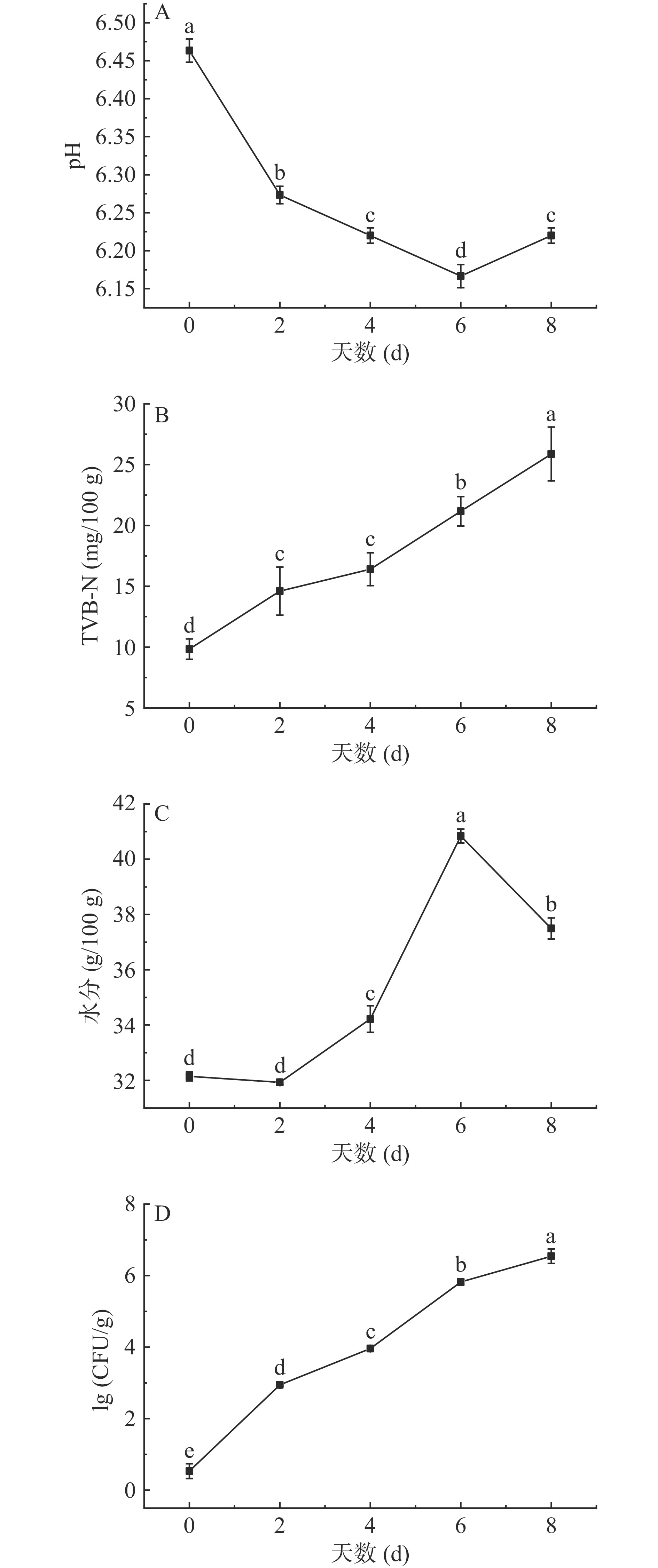
 下载:
下载:
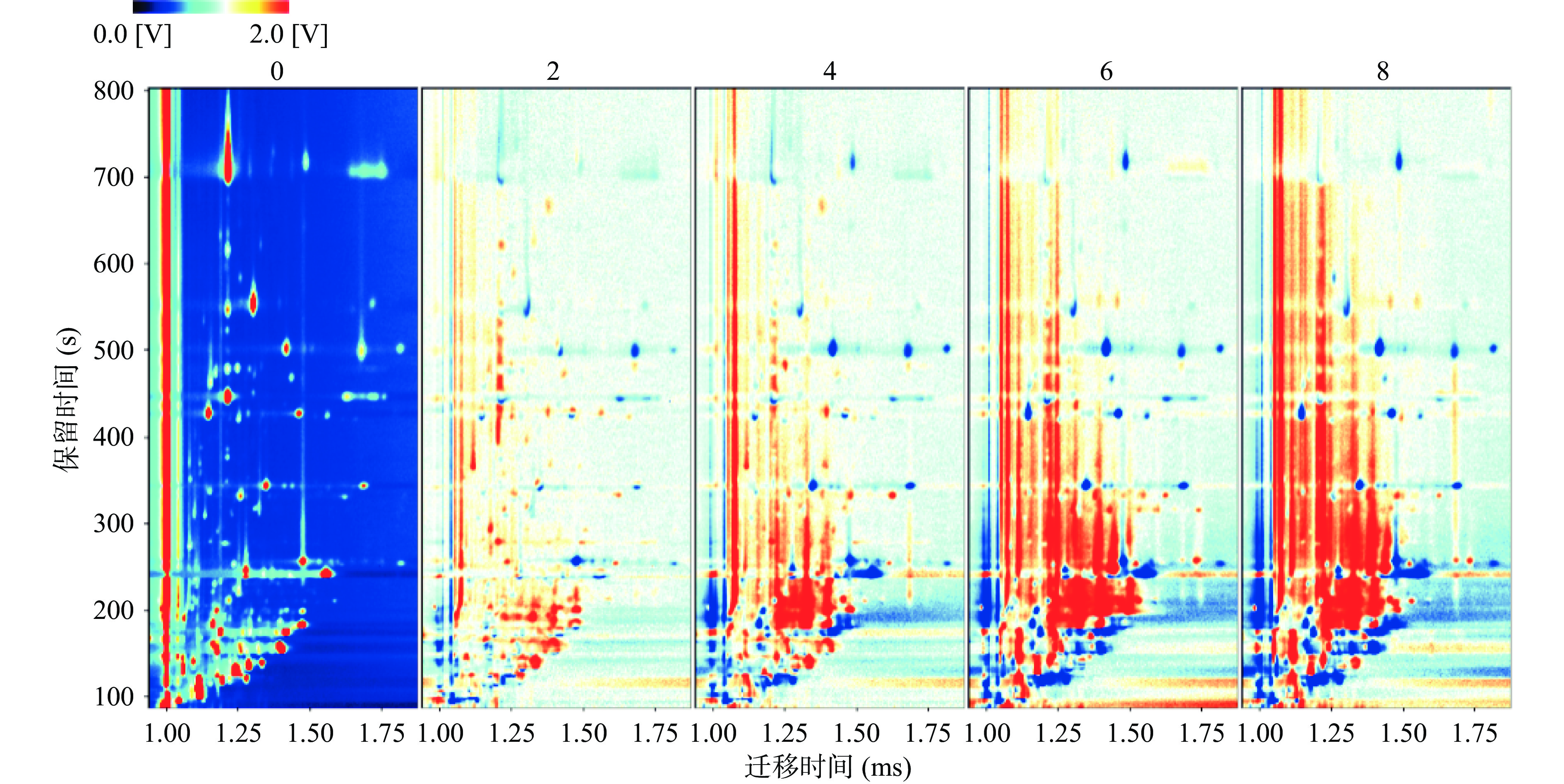
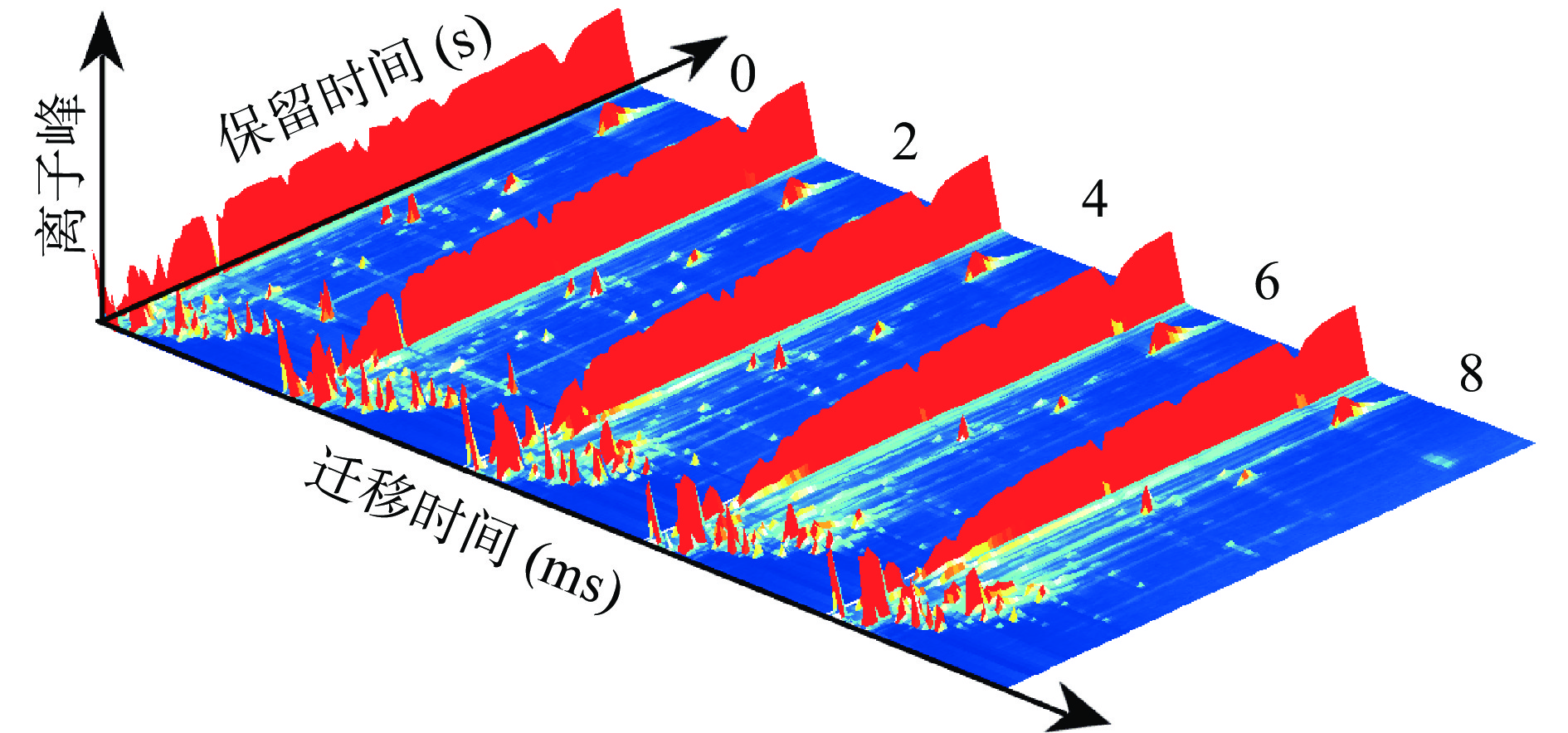
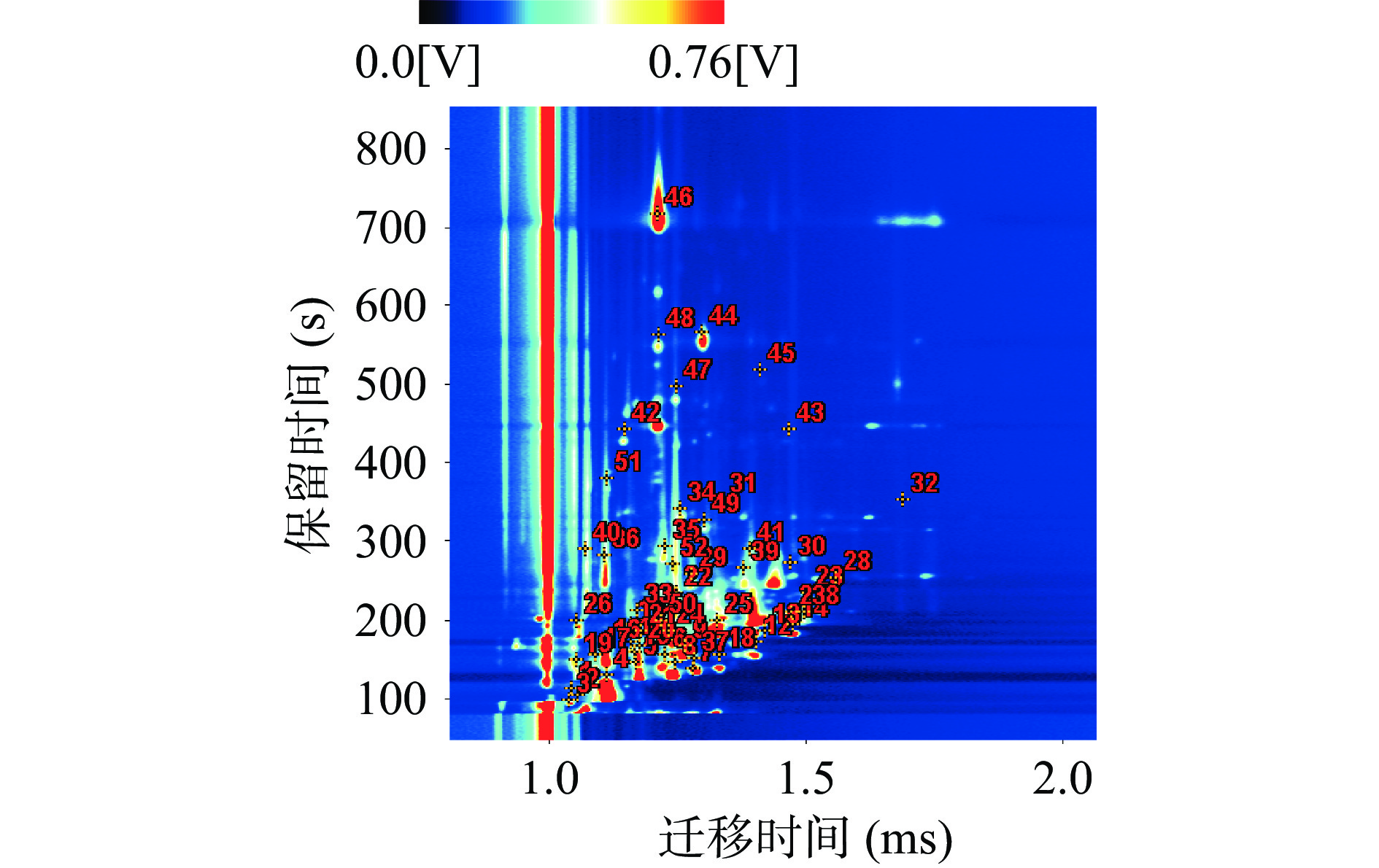
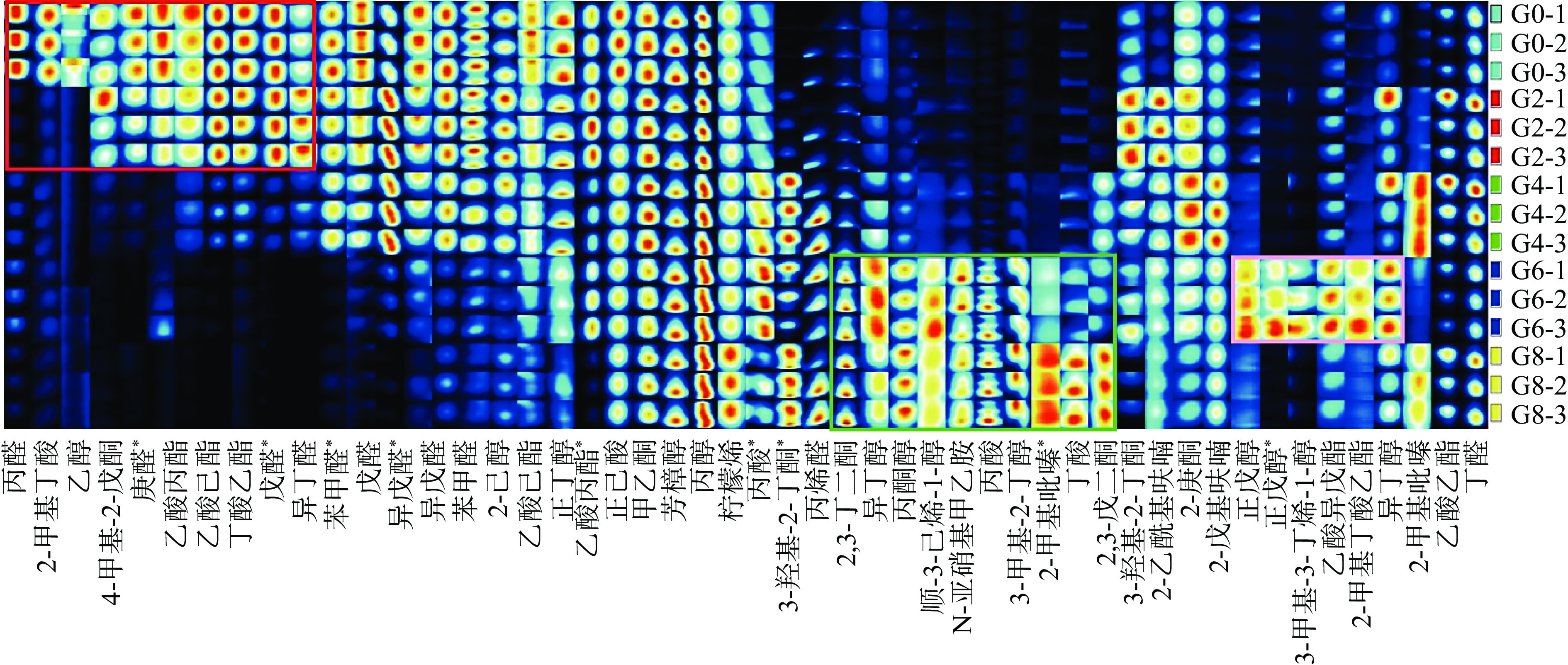
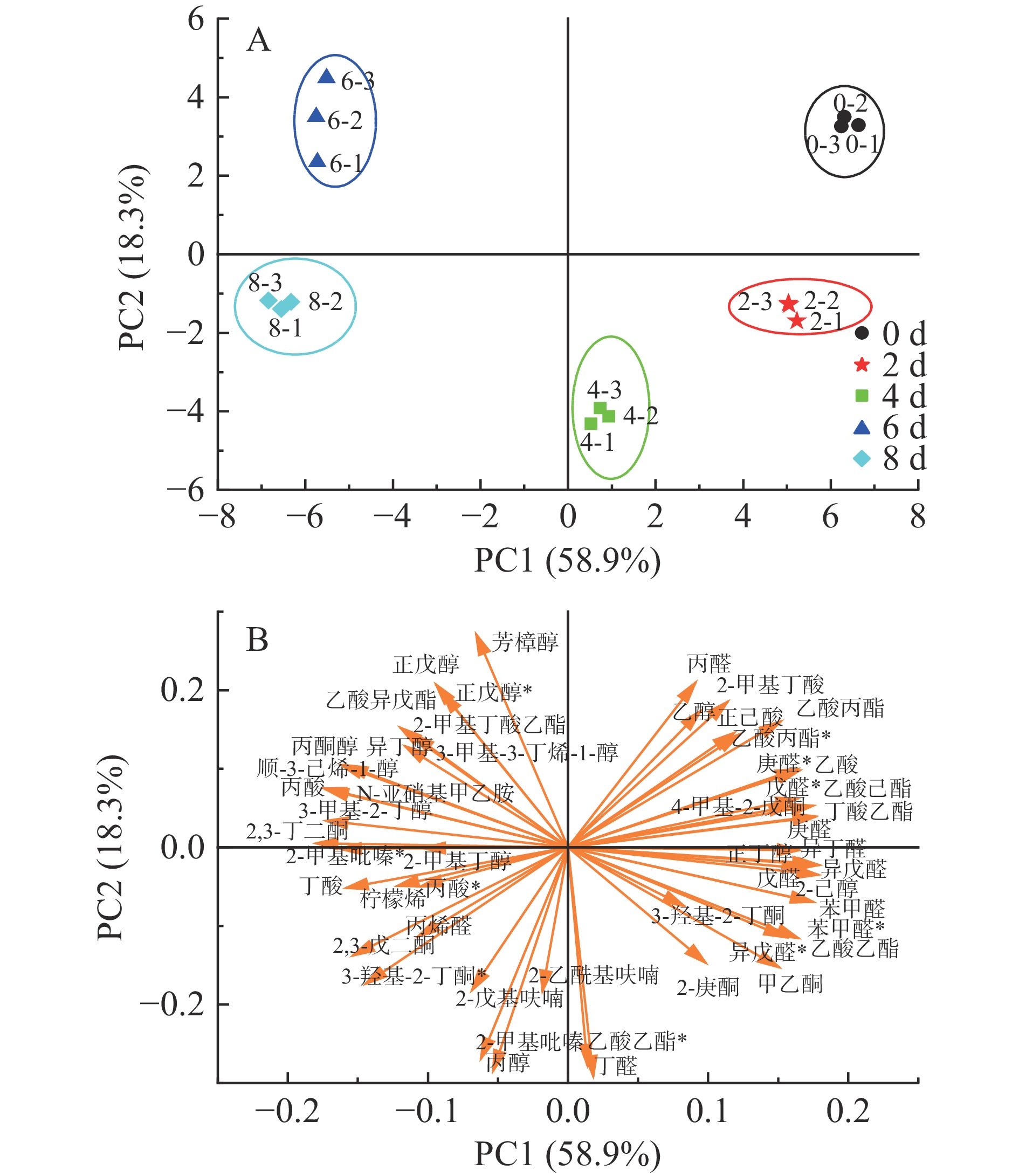
 下载:
下载:
